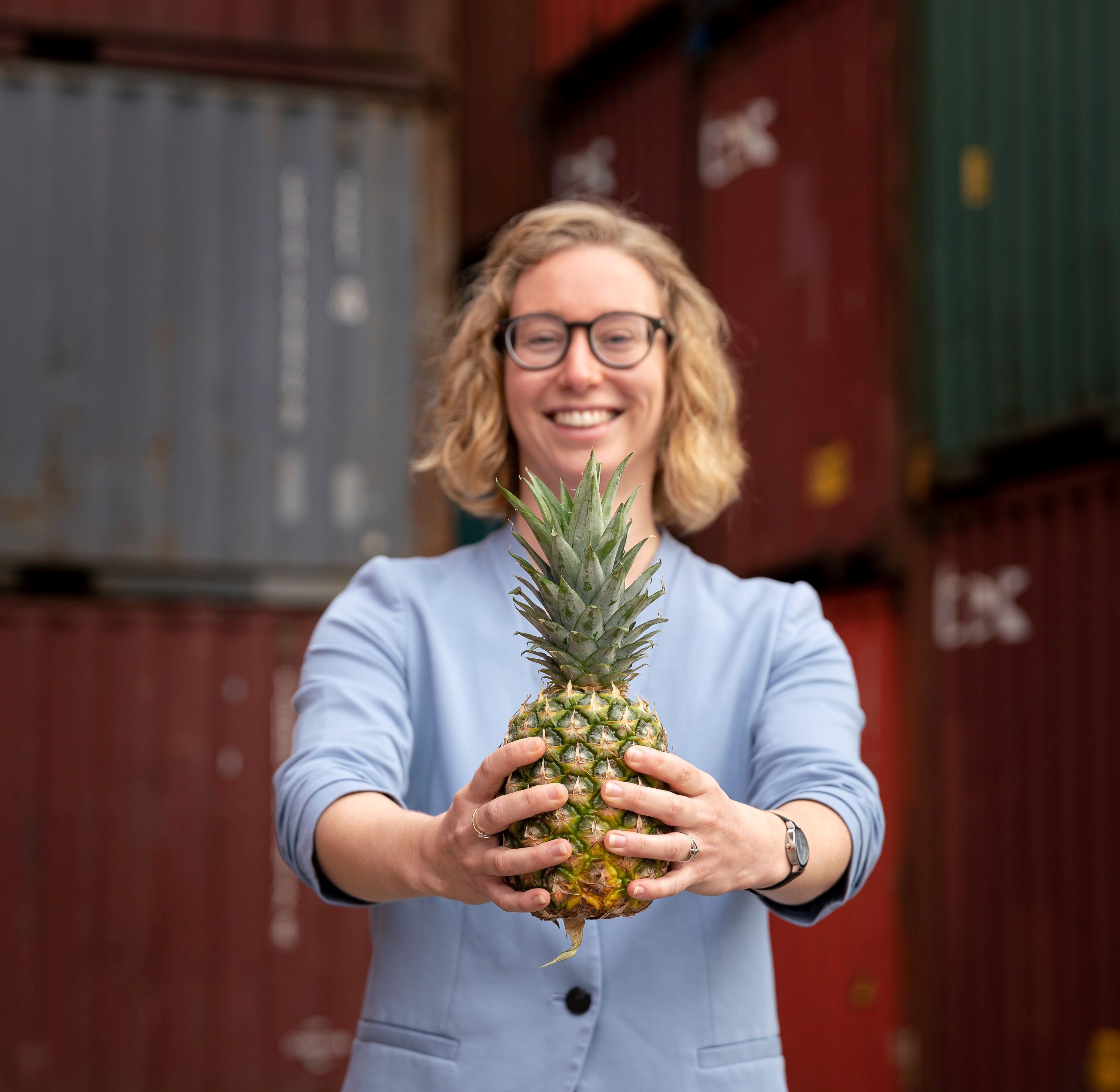Read the Sioux Source Magazine online
SIOUX SOURCE MAGAZINEThe quality of fresh fruit and other refrigerated cargo regularly deteriorates during transport. Rotterdam startup OTFLOW developed a simple solution. However, the underlying knowledge is complex. Anne Eggels, mathware designer at Sioux Technologies, explains how value is added with a simulation model for air circulation.
What is the problem?
‘An awful lot of fruit is transported around the world. That is usually weeks in transit by ship. If the heat management in a container is not in order, the quality suffers, or the cargo may even be lost for consumption. Food is wasted and it also costs money.’
Where does it go wrong?
‘Inside a container is a refrigeration unit. Cold air enters the hollow bottom and flows into the storage section through elongated openings. Heat is dissipated at the top. That system often does not work optimally, for example when, due to the law of least resistance, air only circulates in the front part of the container.’
What solution does OTFLOW offer?
‘The company has developed a cardboard mat together with Wageningen University & Research. Putting it inside a container covers part of the openings. The shape promotes good air circulation.’
Why was Sioux called for help?
‘We developed a Computational Fluid Dynamics simulation model for the air circulation in a container, specifically aimed at transporting one particular type of fruit, in this case a pineapple. This can be used to determine the optimal dimensions of the mat, and thus improve the product.’
How challenging was this assignment?
‘You have to deal with a lot of variables; the shape and size of the fruit, whether it is in closed boxes or open crates, how they are placed, the heat radiation from the walls... Fruit also produces heat during the ripening process. It is incredibly complex to capture all these things in mathematical rules and include them in a comprehensive flow model.’
So how did you accomplish that?
‘By working with small separate simulations and stacking the results as blocks. In addition, we only included the effects of factors that have a substantial impact. That makes a huge difference to the computational speed of simulations.’
Is the collaboration with OTFLOW finished?
‘We are going to make the model more realistic by including even more effects. We are also expanding on it to make it applicable to other fruits and products, such as vegetables and flowers.’
Can such a simulation model also be used in other markets?
‘Certainly. For example, there is increasing attention to improving air circulation in offices, schools, and aeroplanes. Many variables also play a role in those environments and our model - with the necessary modifications, of course - can be of great value.
